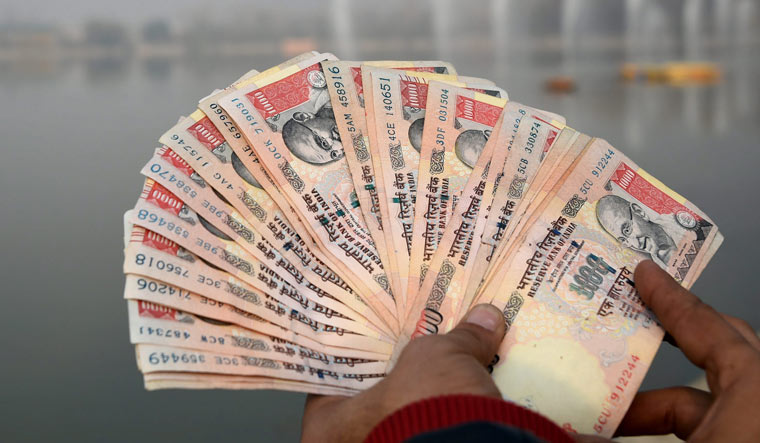New Delhi: The 2016 demonetisation of two high-value currencies has led to an all-time high generation of over 14 lakh suspicious transaction reports (STRs), a record 1,400 per cent jump over the past, by banks and other financial institutions in the country, a latest FIU report has found.
The elite financial snooping unit of the country has compiled comprehensive data of such instances, including fake currency deposits, for the year 2017-18.
This is the highest-ever figure of STRs since the FIU first started the regime over a decade ago.
The FIU is the central agency under the Union finance ministry that analyses suspicious financial transactions pertaining to money laundering, terror financing and serious instances of tax frauds and crimes.
“During the year (2017-18), reporting entities (banks and other financial institutions) continued to examine transactions during demonetisation and as a consequence over 14 lakh STRs were received by FIU-IND.
“This increase is almost 3 times than the STRs received in the last year (2016-17) and 14 times than the STRs received prior to demonetisation,” the agency’s director Pankaj Kumar Mishra said in the report accessed by PTI.
The report, submitted to the government, said there was a ‘remarkable’ increase in the number of STRs received in 2017-18 which is more than 3-times over the previous year at 4,73,006 such reports.
The demonetisaton of two high-value currency notes of Rs 1000 and Rs 500 was declared by Prime Minister Narendra Modi on the night of November 8, 2016. Huge cash was deposited in banks and multiple inter-bank transactions ensued post this announcement.
The FIU is the only empowered agency under the Prevention of Money Laundering Act (PMLA) that can seek these reports and banks and other financial bodies are required to furnish high-value cash transactions, counterfeit currency deposits and STRs to it every month as part of India’s combat mechanism against terrorist financing and money laundering through its shores.
STRs are generated when a transaction either indicates that it has been made in circumstances of unusual or unjustified complexity or appears to have no economic rationale or bona fide purpose and also those transactions that give rise to a reasonable ground of suspicion that it may involve financing of the activities relating to terrorism.
The report added that comparative figures for STRs in the three previous years, prior to notes ban, stood at 61,953 reports in 2013-14,58,646 in 2014-15 and 1,05,973 in 2015-16.
It said apart from the exercise of demonetisation, a major outreach initiative was adopted by the FIU asking reporting entities like banks to comply with the reporting provisions under the anti-money laundering law, and that can also be attributed for the rise in generation of record high STRs during 2017-18 apart from the notes ban.
The agency, as per its mandate, processes and disseminates these STRs to various law enforcement agencies in the country like the Income-Tax Department, the Enforcement Directorate, CBI, Intelligence Bureau, Directorate of Revenue Intelligence (DRI), Customs department, the National Investigation Agency and others.
“The quantum jump in the number of STRs placed additional responsibility on FIU, which has managed the responsibility of processing STRs despite severe manpower constraints,” it said.
The report said out of the over 14 lakh STRs received, 82,595 were processed and 65,022 were shared with various LEAs during 2017-18 while the rest continued to be disseminated in the subsequent time period.
Acting on these STRs, the report said, the I-T Department detected black money to the tune of 19627.99 crore while the ED seized unaccounted assets worth Rs 984.98 crore during the same post demonetisation period.
The report also talked about counterfeit currency reports (CCRs) that went drastically down from 7,33,508 in 2016-17 (the year of the notes ban) to 3,53,795 in 2017-18.
No particular reason was attributed to this downfall even as demonetisation was cited as the reason when CCRs increased in 2016-17 from more than 4.10 lakh in 2015-16.
It said private Indian banks contributed ‘majority’ of CCRs with the FIU expressing its concern that the compliance levels of public sector banks in this domain ‘continue to be low’ despite the matter being taken up with the RBI.
“During the review of the public sector banks, the best practices of private Indian banks in detection and reporting of counterfeit currency notes were highlighted,” the report said.
CCR pertains to all cash transactions where forged or counterfeit currency notes or bank notes have been used as genuine or where any forgery of a valuable security or a document has taken place in banking channels.
The report did not specify the value of such fake currencies detected.
PTI
